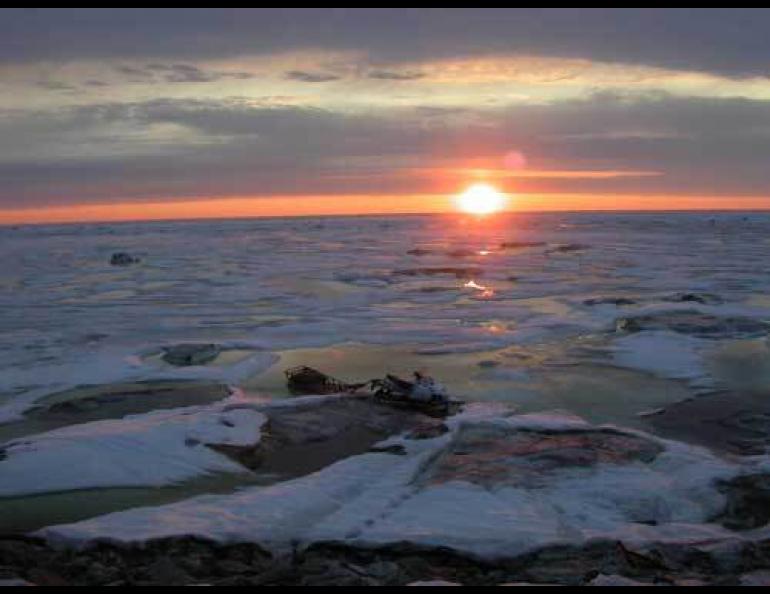
Scientists aim at offering climate services
Seasons are not what they once were in Alaska. Ice roads on Alaska’s North Slope have a shorter lifespan than they had 30 years ago. The extent of sea ice hugging the northern coastlines gets smaller every year. These changes affect Alaskans and people who work in Alaska, and a few scientists just received funding to make climate science user-friendly for those people.
“If I’m buying boats to move oil to villages on the west coast of Alaska, I need to know if I should buy boats to handle broken ice or no ice at all,” said Dan White, the head of the Institute of Northern Engineering at the University of Alaska Fairbanks. “Right now, there are no climate services that tell you what kind of ice to expect in five years off the coast of Alaska.”
White, along with John Walsh of the International Arctic Research Center, Fran Ulmer of the Institute for Social and Economic Research at UAA, and Craig Gerlach of UAF’s Department of Anthropology are among the scientists involved with a project to make National Oceanic & Atmospheric Administration products more applicable to people affected by climate change in Alaska. They’ve teamed to create the Alaska Center for Climate Assessment and Policy.
“Our intent is to make NOAA’s scientific findings as well as operational findings more useful to the people in a region,” said Walsh, chief scientist at the International Arctic Research Center. “What do people out there need that they could be getting from NOAA research?”
NOAA is the agency that runs the National Weather Service, the National Ice Center, and the Climate Prediction Center. The Alaska scientists are aiming to find out how NOAA products might better serve seal hunters, oil companies, barge operators and other people who live and work in Alaska.
Sharon Alden is a potential customer of the new service. A meteorologist for the Alaska Interagency Coordination Center at Fort Wainwright, she helps firefighters by giving them detailed weather briefings. During the fire season, she could use some specific information that’s not currently available but might be lurking in the data already gathered by researchers and technicians.
“I’d like to know the persistence of (weather) patterns that could bring us fire danger — a pattern that causes lightning or fire starts in remote areas — or patterns that would eliminate fire danger,” Alden said.
She’d also like to see monthly average upper-level wind patterns over Alaska and the north Pacific.
“That would be pretty cool,” she said.
Alden said someone at NOAA’s Climate Prediction Center or Climate Diagnostic Center might be able to produce the latter product, while a local grad student or someone else funded by the new project might be able to work out predictions of how persistent fire-weather patterns will be.
The scientists involved with the program chose three pilot projects — a study on the effects of midwinter pumping of tundra ponds to make ice roads on the North Slope, another on how climate change is interacting with other stresses on Yukon Flats villages, and a third on the nature of sea ice in the coastal waters off Alaska.
“We’re already finding there’s a need for ice information beyond what NOAA produces,” Walsh said. “We have no information on ice thickness or stability, and that’s what people are interested in.”
During the five-year project and beyond, the researchers hope to be able to apply science to serve the needs of people affected by a changing Alaska.
“This (project) should be driven by user needs, not what researchers want to do,” Walsh said.





